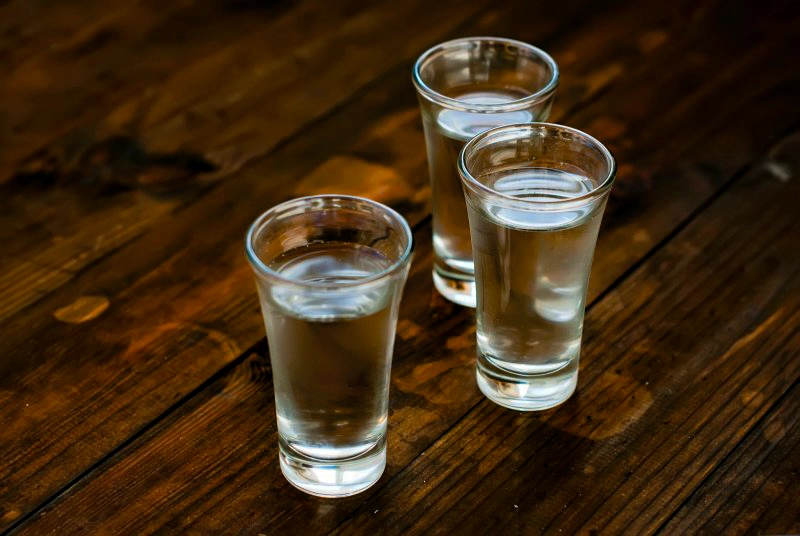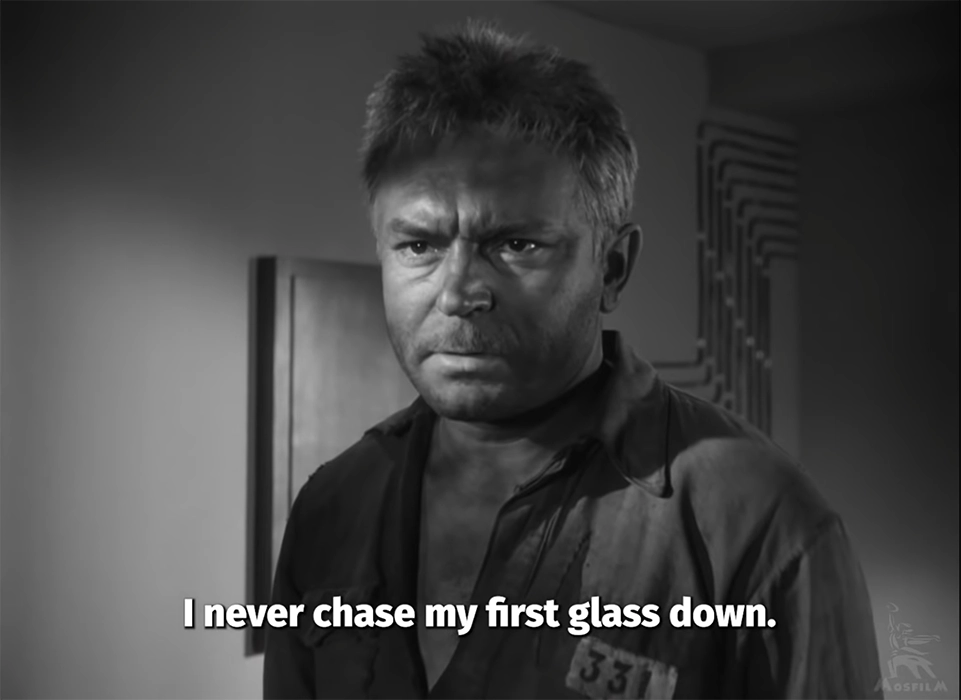Privet (Hey)! First things first, I’m Ukrainian, and my numerous trips to Russia have given me an up-close view of the rich tapestry of Russian drinking culture. As I scoured the internet, I was taken aback by the blatant inaccuracies in many articles about vodka-drinking habits in Russia. The majority of these write-ups, curiously enough, stem from American authors.
It leaves me pondering – how many of them have actually visited Russia or shared a glass with locals? Their narratives seem to rely heavily on stereotypes and the occasional sprinkling of half-truths. Enough’s enough. It’s time to set the record straight and unveil the authentic ways of vodka consumption in Russia.
Preparing to Drink Vodka: Dispelling Myths
I’ve chuckled and raised an eyebrow at some of the tales spun about Russian vodka-drinking habits. Can you believe some think Russians pair their vodka with borscht like it’s some sort of wine pairing at a fancy restaurant? Or that peculiar, random shouts follow every shot? Let’s set the record straight and debunk these myths:
Glasses
When you imagine Russians drinking vodka, what comes to mind? Massive mugs? Fancy goblets? Nope, that’s just the magic of Hollywood. In reality, the tradition is unpretentious and straightforward – a shot is typically served in a 50-milliliter shot glass called – rymka.

I know you might’ve seen scenes in films (yes, even in Russian ones) where a character downs vodka from a clear, standard-sized glass. But let me spill some insider info: that cinematic choice is often to highlight a character’s struggle with alcohol. In everyday Russian life, such scenes are rare. The trusty 50ml shot glass reigns supreme.
Accompaniments
If you thought vodka goes down with some intricate, fancy side dishes, think again. The real classics? A slice of hearty black bread, crunchy pickles, tangy pickled tomatoes, or a crisp bite of green onion or garlic.

And while it might sound lavish to have sandwiches topped with red caviar alongside vodka, remember this is reserved for special occasions. It’s akin to saving that expensive bottle of champagne for New Year’s Eve.
Temperature
When it comes to enjoying vodka in its prime, temperature plays a crucial role. Just like a fine wine has its perfect serving temp, vodka does too. The ideal? Cold, but not teeth-chatteringly so. That’s why many Russians stow their vodka bottles in the refrigerator. It ensures that the drink is chilled to perfection when it’s time to pour and savor.

Considering the freezer for your vodka? Sure, vodka won’t freeze at typical freezer temps. But here’s the thing: prolonged freezing can alter vodka’s taste and feel.
Drinking Solo?
In Russia, sipping vodka isn’t just about the drink—it’s about the experience. And while some folks might enjoy a glass of wine alone after a long day, diving into a bottle of vodka solo isn’t the norm. It’s not so much a strict rule but rather a cultural preference.
Why? Vodka is often associated with moments of togetherness and bonding. Picture this: a group of friends or family gathered around a table, sharing stories, toasts, and laughter. There’s an unspoken camaraderie that comes with sharing a drink, and vodka, in particular, has been a part of many such moments in Russian history.

That being said, you won’t be judged if you occasionally indulge by yourself. Everyone has their moments. But in the grand scheme, vodka in Russia is typically a social affair. The company, the chatter, and the shared memories often elevate the experience beyond just the drink.
The Proper Way to Drink Vodka
First off, you need a designated pourer, typically the household’s head or the most influential person in the group. This person is responsible for filling everyone’s glasses; swapping pourers mid-session isn’t customary. The Russians have a saying that goes, “The hand doesn’t change.” Essentially, it emphasizes that the person who begins pouring the vodka should be the one to continue doing so throughout the gathering.
If you’re the one pouring, ensure everyone’s glasses are on the table before filling them up. And remember, always hold off on that first sip until a toast has been made. It’s all about respect and tradition.
A Deep Dive into Toasts
For many beyond the borders of Eastern Europe, toasts can be a bit of a mystery. So, let’s unravel it. At its core, a toast is a brief, heartfelt address made just before everyone dives into their drink. But it’s not just about words. The person delivering the toast usually stands up as a sign of respect and raises their shot glass, capturing everyone’s attention. Historically, this honor was reserved for the elder or the most revered person seated. However, times are changing, and anyone feeling the moment can step up these days.

If you’re the one blowing out candles on birthdays, you won’t be leading the toasts. Others will toast to you, wishing you all the best. And as everyone finishes speaking, glasses come together in a celebratory clink. The only time glasses won’t meet? When toasting in memory of someone who passed. That moment is silent, filled with respect and memories.
The First Shot Etiquette in Russia
When Russians take that first shot of vodka, they don’t immediately reach for their appetizer. There’s a saying they hold dear:
“posle pervoj ne zakusyvayu”
Simply put, after the first shot, they don’t snack. It’s a moment of savoring, of letting the spirit speak before any food jumps in. Soon after, there’s another guiding principle:
“mezhdu pervoj i vtoroj pereryvchik nebol’shoj”
This charmingly translates to – First and second shot – pause short.
Once you’re past that second shot, it’s time to snack. Bread and cucumber are the usual go-to’s, pairing perfectly with the spirit’s sharpness.
And when the last drop of vodka is gone from that bottle? It’s swiftly placed under the table or shown in the bin because no empty bottle should clutter a Russian festivity.
Declining a Refill: The Polite Way to Bow Out
Not in the mood for another shot? That’s perfectly okay. The next time the designated pourer is about to fill everyone’s glasses, just cover your shot glass with your hand.

Accompany it with a polite “Thank you, I’m all done.” It’s a universally understood gesture, and no further words are needed. There’s only one exception – the last shot.
The Significance of the Last Shot: Russia’s Toast to Goodbye
Deep within Russian customs, as the evening winds down, a heartfelt ritual emerges – the celebrated “last shot.” What might this special drink signify? Picture yourself rounding off a night at a Russian pal’s place. Just as you’re about to step out, your host insists on one final toast. But this isn’t just another drink. Termed “Na dorogu” (For the road), “Na konya” (On the horse), or “Na pososhok” (I don’t know how to translate this properly, but that maybe “on the fly”), this shot offers more than mere alcohol. It’s a glowing token of goodwill, symbolizing warm wishes as you head on your way.
While passing on a drink during the festivities is common, this culminating gesture isn’t one to skip. Taking this “last shot” stands as a mark of honor and acknowledgment.
But here’s a little insider tip: sometimes, the “last shot” isn’t truly the last! It’s a playful ruse! Trust me; there’ve been instances where guests, thinking they were downing their final drink, ended up indulging in multiple “last shots” – all thanks to a persuasive host who wouldn’t let the night end. So, if you find yourself in such a situation, brace yourself and enjoy the fun-filled twist to this Russian tradition!
Vodka Cocktails? Think Again
When you think of Russia and vodka, you might imagine the classic, clear spirit served neat. And you’d be on the mark. While the cocktail culture has overtaken the world, Russians have mostly stayed true to their roots. For them, vodka is not just another ingredient in a fancy drink. It’s a symbol, an experience.

Influenced by global trends, the younger generations might occasionally dabble in vodka-infused concoctions. But even among them, mixing vodka with just a splash of juice is as adventurous as it gets. The essence of vodka is its purity, and that’s how it’s revered and relished in its homeland.
The Iconic Scene That Shaped Vodka Traditions
The power of cinema to imprint cultural nuances is undeniable. The phrase, “After the first one, I don’t snack,” serves as a testament to this. While it existed prior, it was popularized and became widely recognized after its appearance in the 1959 Soviet film “The Fate of Man,” filmed by Sergei Bondarchuk.
Set against the grim backdrop of World War II, the film captures a poignant moment between a Soviet soldier, Andrei Sokolov, and a German officer. In a display of unexpected civility amid war’s chaos, the officer extends Sokolov a shot of vodka and some food as a final gesture. Without hesitation, Sokolov downs the glass, confidently asserting:
“I don’t snack after the first one.”
The intrigued German officer pours a second glass, which Sokolov again drinks without partaking in the accompanying snack. Upon being questioned about his refusal, Sokolov nonchalantly responds, “And I’m not used to snacking even after the second glass.”
Only after the third glass does Sokolov indulge in a small bite of bread, underscoring his resilience and spirit.

Observe the caption on the image, which reads, “I never chase my first glass down.” The movie’s subtitles might have slightly missed the mark, failing to capture the true essence of this iconic line. You can view the scene via the provided YouTube timecode link to get a feel for the moment.
This particular scene resonated deeply with audiences. Sokolov’s declaration became emblematic, morphing into a cultural touchstone. It bolstered the pre-existing, albeit not widely practiced, tradition of abstaining from snacks after the initial shots of vodka. Thanks to the film’s influence, what was once a fringe custom turned into a widely embraced ritual.
Small conclusion
In wrapping up our dive into the world of Russian vodka rituals, it’s evident that there’s a rich tapestry of tradition and respect deeply woven into every sip. Beyond the stereotypes and myths, there’s an art and a profound cultural significance to how Russians approach vodka. So, the next time you raise a glass, remember the deeper connotations, the camaraderie, and the history that’s being honored.






